The city of Bandung – Indonesia’s fourth largest with over 2.5 million residents – since 2002 has become one of the most special places for me in the country, and will remain so, thanks to the five years I spent there for college and running a food business with four friends. However, the city was never intended to be such a bustling place with millions of inhabitants like it is today, for the Dutch colonial administration planned it to be a new capital of the Dutch East Indies (present-day Indonesia) while the commercial center of the colony remained in Batavia (modern-day Jakarta). Bandung’s cooler climes was one of the main reasons for this move, and it is also a reason why contemporary Jakartans often flock to the former on weekends, even though its narrow streets become jammed with traffic.
This was not the case in my early years living in Bandung for back then, people from Jakarta had to drive through the mountains for at least five hours to get to the capital of West Java province, home of the Sundanese people. But that was until 2005 when a new toll road cut the journey time to just two hours. This, combined with other factors including the latter’s high population growth since Indonesia’s independence in 1945, inadequate public transport, and lack of urban planning by successive mayors, have made Bandung less and less livable as the years passed. One time I got evicted from a rented house that I shared with a few other people to make way for the construction of a cable-stayed flyover not far from my campus. Now, the tower holding up the constantly busy overpass stands right where that house used to sit. I am at turns a witness, a victim, and a beneficiary of the city’s rapid development.
Just a few hundred meters north of the flyover lies the main campus of one of Indonesia’s oldest higher education institutions. First established in 1920 as the Technische Hoogeshcool te Bandoeng, it evolved from a school to meet the need for technical professionals in the Dutch East Indies, to housing the faculties of engineering and science of the then Jakarta-based Universitas Indonesia, and eventually a separate academic entity in 1959 which is known today as the Institut Teknologi Bandung (ITB). In 2013, Ridwan Kamil, an alumnus of ITB’s faculty of architecture, became the mayor of Bandung. Under his five-year tenure he brought about sweeping reforms to the city’s notoriously inefficient bureaucracy. But to most people, he is most known for his effort to bring people back to the parks by reinvigorating the existing ones to make them cooler for the younger generation and friendlier to families and kids. On top of that, he also created new public spaces as a better and healthier alternative to malls.
Teras Cikapundung on the banks of the Cikapundung river that flows to the north of ITB’s campus is an example of what the municipal government has done to provide residents with more recreational venues. Once a derelict corner of Bandung which at one point was almost turned into another commercial center, under the leadership of Emil – a nickname by which the former mayor is affectionately known – this place is now an unexpected haven for people of all ages. The grounds are peppered with art installations, a refreshing change from the incongruous houses and concrete buildings surrounding it. Further down the main road toward the northwest is the beginning of Cihampelas Street, a narrow two-lane thoroughfare popular in the 1990s as the city’s hub of jeans shops. As commercial activity peaked, so did the number of hawkers filling up both sides of the road which contributed to its reputation as one of the most congested parts of Bandung. In 2017 the city government built an elevated pedestrian walkway spanning 450 meters above the constantly busy street as a new place for those hawkers to run their business while at the same time providing locals and visitors alike with a more comfortable way to explore this part of the city on foot.
The Bandung government also actively recruited independent architecture studios to contribute to its plans for urban renewal to bring fresh ideas and incorporate them into people’s daily lives. An unused plot of land in a rundown area known for its scrap metal shops, which for years was where the locals dumped their garbage, is an example of one such project. Thanks to local firm SHAU, the junkyard was turned into a welcoming public space with a layout that encourages people to explore its nooks and crannies. Known as Alun-Alun Cicendo, the relatively small plaza is now a lively place where residents play sports and gather, kids run around, and trendy city dwellers take selfies with the striking ocher-hued pavilion in the background. Not too far from this park is Bima Microlibrary, also designed by SHAU with the purpose of creating a space to encourage people to read more on top of doing other communal activities.
In my previous company I had to go to Bandung every other week to visit the company’s IT office, which is still located in the city despite the headquarters’ move to Jakarta more than a decade ago. Nothing is fun about a standard work trip, but these regular travels to Bandung at least allowed me to briefly escape Jakarta’s hot and humid weather. The IT department occupies a beautiful Dutch colonial building at the heart of the city where the sidewalks had been restored and gentrified during Ridwan Kamil’s tenure as mayor, making a morning or afternoon walk there much more pleasant than before.
However, as his term ended in 2018, followed by his successful bid to be elected as the governor of West Java, Emil now has much bigger responsibilities on his shoulders. Bandung, on the other hand, is now run by his former deputy. On my last work trip to the city, I asked an online taxi driver about how Bandung has been doing since the baton of leadership was passed to the new mayor. “The new mayor doesn’t really need to create new policies, just continue what Emil has started,” he said while lamenting City Hall’s inability to follow in those footsteps. As an outsider, I did notice how some corners of Bandung began to lose their charm, albeit only marginally.
In spite of this, I see myself returning to this city again and again in the future, because despite Bandung’s many incompetent politicians, I have faith in the public’s ability to remain true to their creative and artistic calling which makes this city an exciting place to explore.

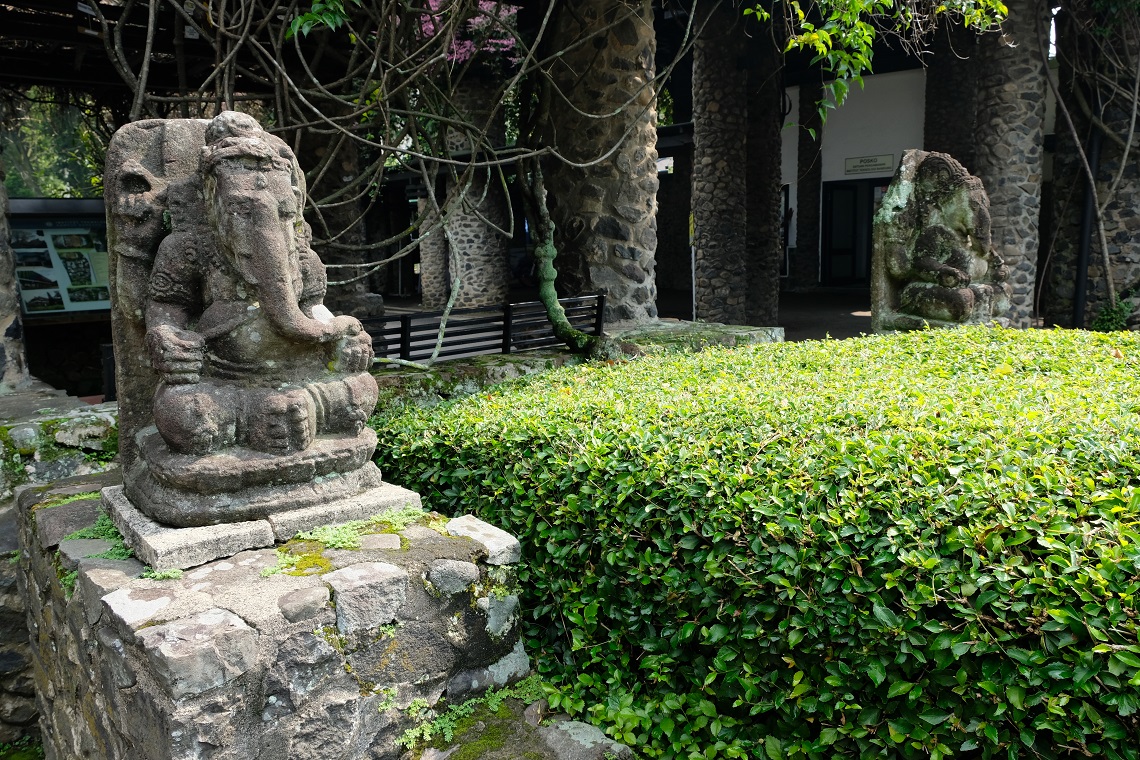


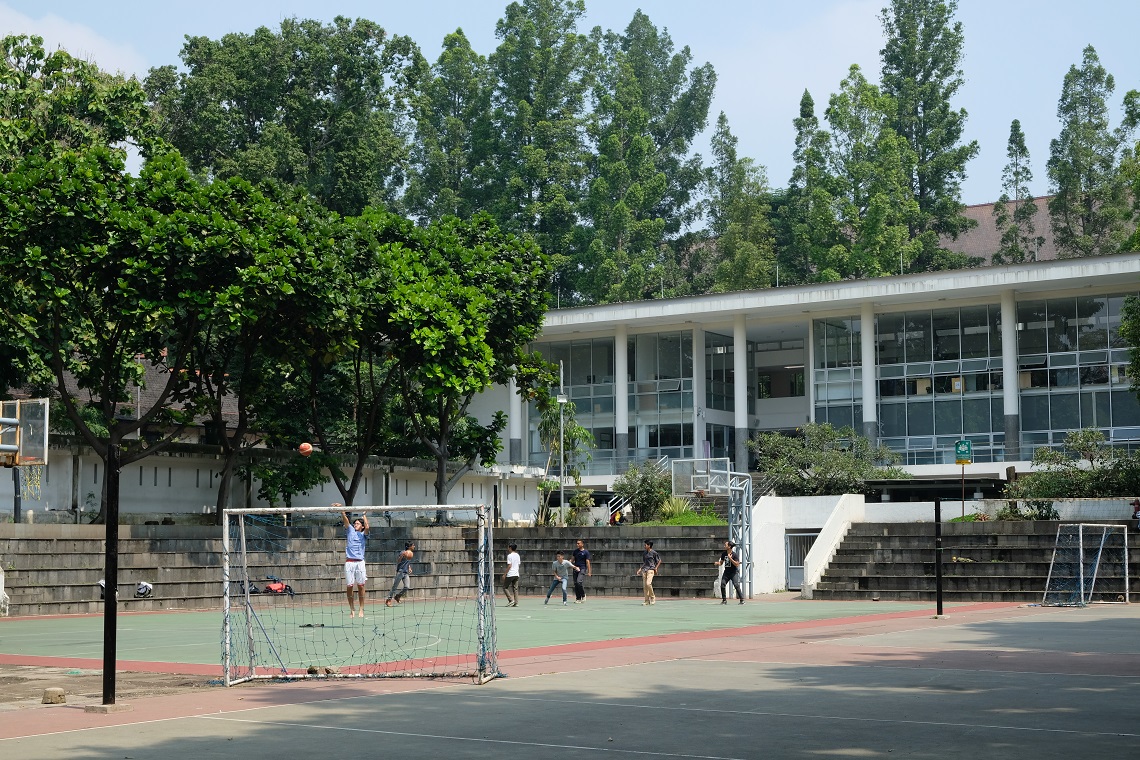


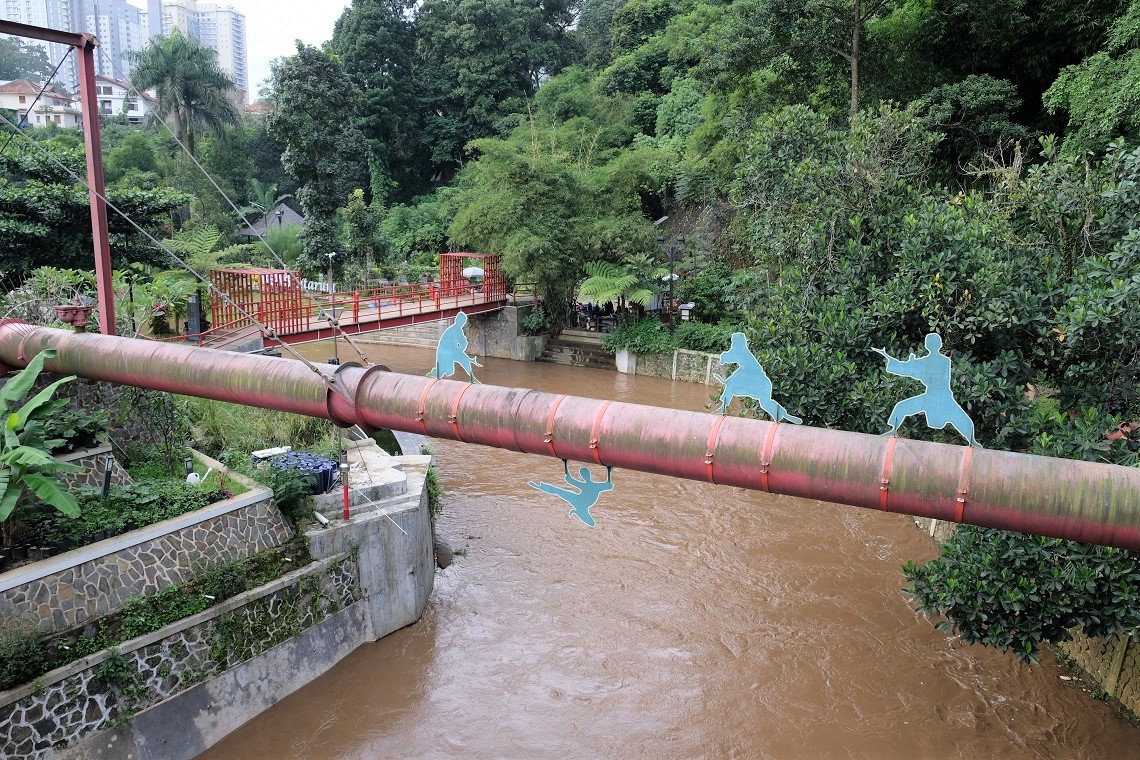


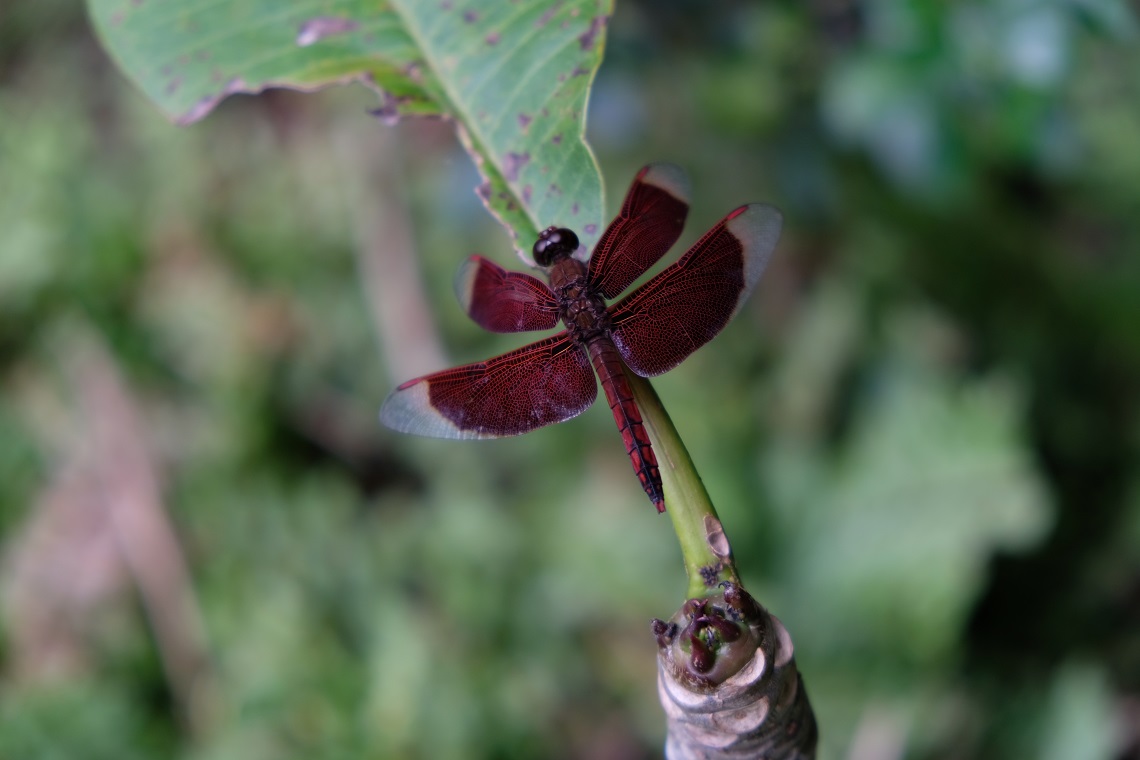





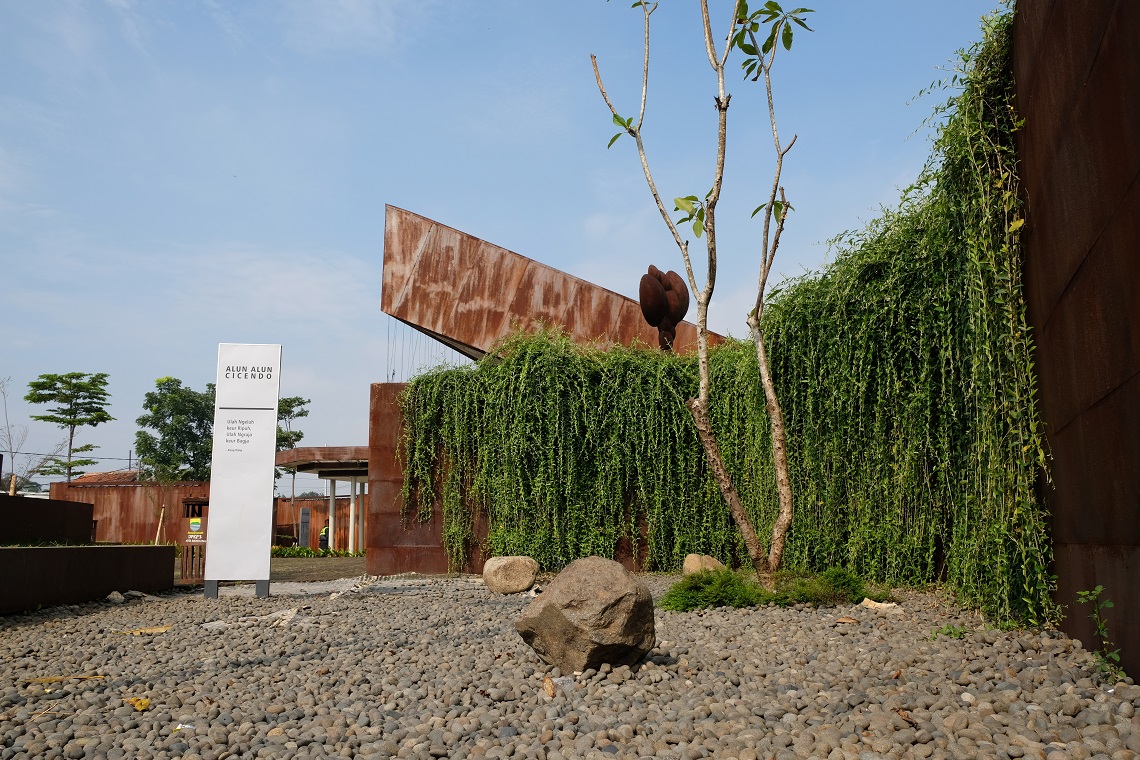






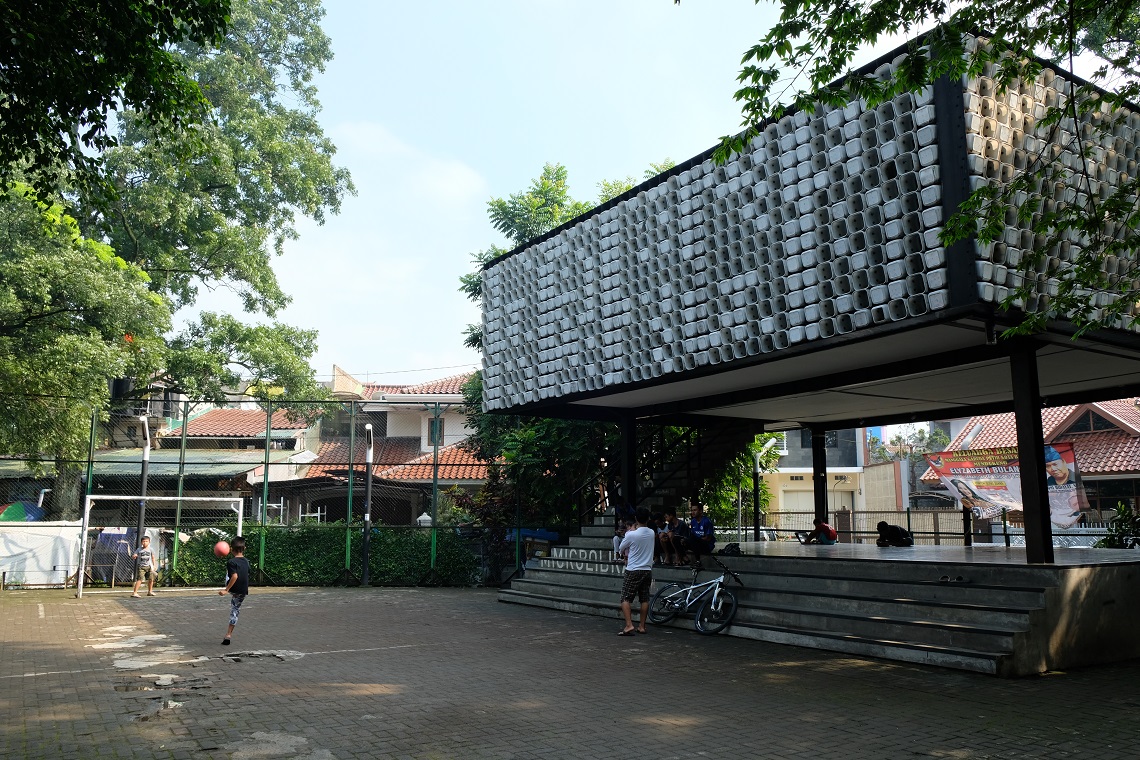


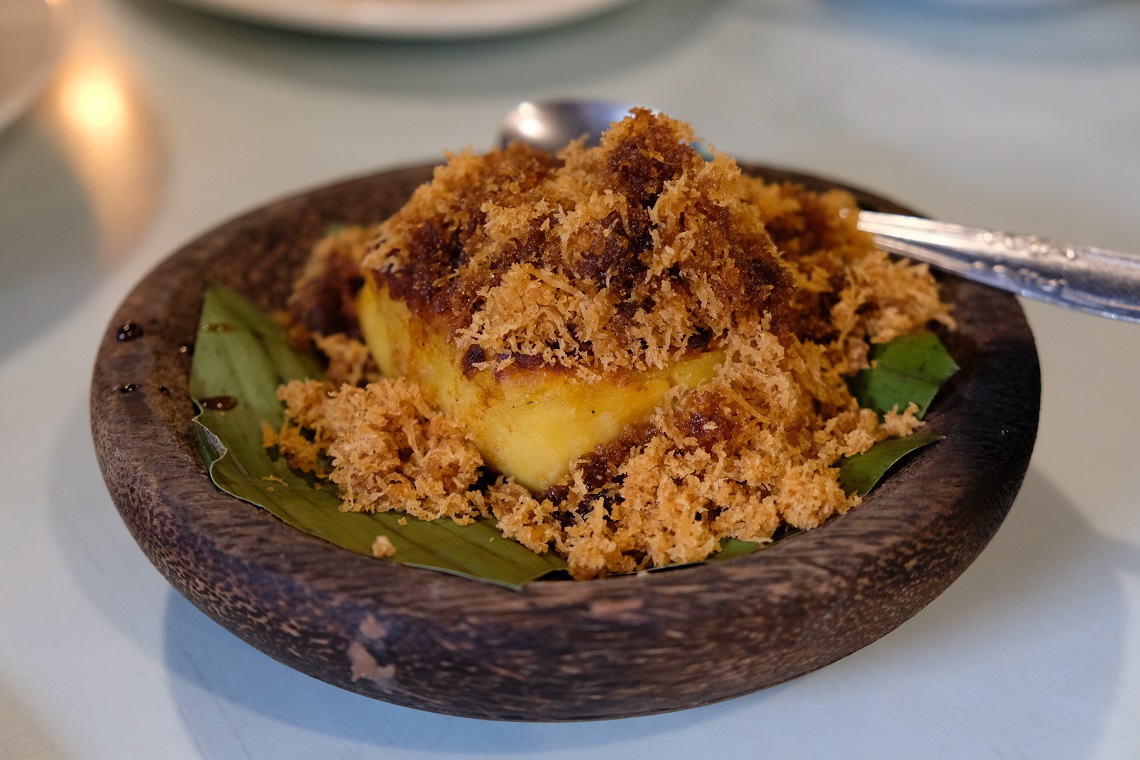


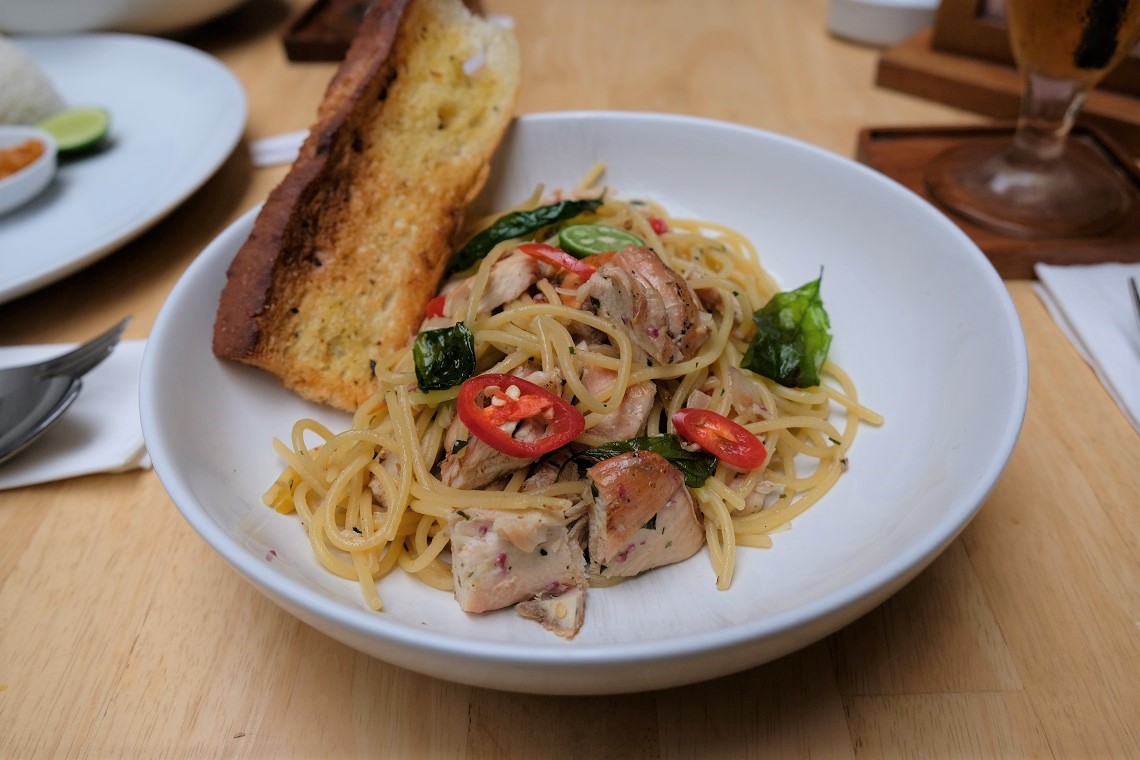

as always, beautiful pics, bama. simple lessons in photography
LikeLiked by 1 person
Thank you, Charly. In spite of going to Bandung at the height of the rainy season, we were quite lucky with the weather, which helped a lot in regards to photography.
LikeLiked by 1 person
As usual, you have treated your readers with a imagery laden feast from Bandung, which I understand is fittingly going to be a series. The cutouts practicing ‘pencak silat’ is interesting, especially the one hanging below the pipe, defying gravity. The red tower seems to have put a bookmark on your onetime abode. I will wait for more.
Hindu goddess of knowledge is Sarswati, not Ganesha, who is more a god of good omen, and a remover of obstacles.
LikeLiked by 2 people
Thanks Umashankar! Unfortunately some parts of Teras Cikapundung were already falling apart at the time of our visit. I really hope under the new mayor this won’t further deteriorate for this green corner of Bandung is such a nice place for families to hang out.
Thanks for confirming about Saraswati. However, although in India Ganesha is indeed known as a god of good omen and a remover of obstacles, in Indonesia (particularly in Java and Bali), he is more known as a patron of arts and sciences, and the god of intellect and wisdom. That’s why many educational institutions in the country have Ganesha depicted on their emblems. On the other hand, Saraswati is more popular in Bali. Her image can easily be found at public schools.
LikeLiked by 2 people
Your piece is magical. Now I’m in love with this place I’ve have never been to.
LikeLiked by 1 person
Thanks for your kind words, Nishtha.
LikeLiked by 1 person
It is so lucky for me to find out your blog when i am looking for information for my java trip.
Thanks a lot for posts about Bandung and Jakarta.
Best wishes to you from Ho Chi Minh City, Vietnam
LikeLiked by 1 person
Glad my blog helped you plan your trip to Java. There are so many things to see on the island, from volcanoes to ancient temples, Dutch colonial buildings, and many more. Wishing you a great time exploring Java!
LikeLiked by 1 person
The Bandung conference of 1955 played a large role in our school textbook of modern history. Nice to see so many different aspects of a city which I’d previously never thought of except in terms of the conference.
LikeLiked by 1 person
All Indonesian schoolkids also learn a lot about the Bandung Conference which is why the original venue is now one of the most popular places in the city among tourists. From history textbook I learned how the leaders of Indonesia, India, Ceylon, Pakistan and Burma worked closely to unite nations across Asia and Africa to oppose European colonialism. Nice to know that we learned about the same thing at school!
LikeLiked by 1 person
I only have a vague recollection of visiting Bandung when I was a kid. My family was visiting my uncle who was working in Jakarta back in the 1970’s. We drove for hours to Bandung. I only remembered that it was a village with bullock carts playing the narrow roads. How times have changed.
LikeLiked by 1 person
Even when I first moved to Bandung, the city was much quieter than how it was when I left it for Jakarta six years later. That’s the thing about building roads to allow easy access to a place: on the one hand it helps its economy, but on the other hand it changes the place forever, and not always for the good.
LikeLiked by 1 person
Loved it ❤
The places, the food, everything.
LikeLiked by 1 person
Thanks! Glad you enjoyed this post.
LikeLiked by 1 person
Some of the urban renewal (the parks, the pubic art, etc) remind me of some of Chicago’s green space initiatives in the past few decades. It’s nice when city leaders finally get the idea that a city needs to be livable and aesthetically pleasing as well as economically successful, and that most of the time the first thing even enhances the second. I also enjoyed a few of your trips down memory lane! University years are always generate such strong memories, and I liked the mental picture of you getting thrown in that lake (haha) and strolling those paths and even the life-goes-on bittersweet feeling of losing your rental house to city progress in the form of a bridge. I’m learning so much about your different cities there!
LikeLiked by 1 person
I started to realize the importance of a city’s livability for its own success when I read Monocle — a magazine focusing on urbanism, good design, and sustainable business, among other things — for the first time a few years back. Then I began looking at small details of the cities I traveled to, including their parks, public spaces, museums, art galleries, and other places that inspire the locals to do more good things for their cities.
Before I was thrown into that pond, I remember being tickled to death! My friends were cruel, haha. It was in Bandung where for the first time in my life I lived by myself, which is probably one of the reasons why I have a lot of memories of this city.
LikeLiked by 1 person
Bama, I think my visits to Bandung have been greatly enriched by the fact that you often come along. As someone who went to college there and know the city well, you’ve been an invaluable guide and it has been fascinating to hear about how it was then and how Bandung has changed in the years since you moved to Jakarta.
This post is a great illustration of how important it is for cities everywhere to have good mayors who look after the interests of society at large, whether it’s by upgrading public transportation and healthcare infrastructure or improving recreational spaces and creating new parks/squares that residents can be proud of.
LikeLiked by 1 person
Maybe I should consider becoming a professional tour guide. 🙂 It’s funny how this time you enjoyed the food in Bandung much more than your first visit back in 2014 — back then I was too focused on making sure that you tried as much Sundanese food as possible, while this time I took you to places I actually visit often every time I go to Bandung.
I’m curious how the high-speed train will change Bandung in a few years’ time. However, it’s always fascinating to see the city’s transformation, sometimes for the better, other times for the worst.
LikeLiked by 1 person
This is not the Bandung I remember from a brief visit in 1991. I recall it being quite rundown. It is great to see emphasis given to public space that is green and nicely designed. I enjoyed reading about your college-day memories and, as usual, your food photography has got me salivating. Who knew that tacos could look so attractive and exotic, and that salmon in curry sauce…yum!
LikeLiked by 1 person
Bandung has changed a lot since your visit 28 years ago — it even changed quite dramatically during my five years studying in this city. It’s a lot busier now, but I always enjoy a trip to Bandung to jog some fond memories. If you do return to Bandung one day, don’t miss its culinary scene — it’s famous for its creative take on many well-known dishes.
LikeLike
I was born and lived in Bandung for 18 years, yet I wasn’t proud of my home town. But, in the past few years, after I moved to another city, my love for Bandung started to bloom. I see this city as a place full of nostalgic, a beautiful city surrounded by mountains and a lot of childhood memories.
I don’t know-how is the future of Bandung when it becomes more and more crowded. Hope Bandung can keep her beauty 🙂
LikeLiked by 1 person
That happened to me as well. I began to truly appreciate Semarang (my home town) and Jakarta (where I’ve been living for 11 years) only after I traveled to a lot of places both in Indonesia and abroad.
If Indonesia can’t keep its population growth in control, our crowded cities will become even more so in the not-too-distant future.
LikeLike
Lots of information in one post, love it!
a well written english, which is far above my level. it’s always my pleasure to read a well written english blog post.
it’s a neat blog about traveling. looking forward to read your next post.
LikeLiked by 1 person
Hi Adynura. Terima kasih sudah mampir di blog saya. We certainly hope that the day when we’re able to travel freely again will come sooner than later. But until then, stay safe and healthy.
LikeLike
Yes, stay safe to you too. dan semoga semua ini cepat berakhir dan Bama bisa traveling lagi.
LikeLiked by 1 person
Likewise! 🙂
LikeLike
Pingback: Garut: A Warm Welcome in A Cool City | What an Amazing World!